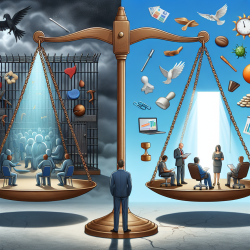Understanding the Roots of Mental Health Classification
In the ever-evolving field of mental health, understanding historical frameworks can provide valuable insights into current practices. One such framework is Skae's Classification of Mental Diseases, critiqued by J. Crichton Browne and further elaborated by T. S. Clouston in the late 19th century. Although developed over a century ago, Skae's work offers a foundational perspective that can enhance modern therapeutic practices, particularly in the realm of online therapy services provided by companies like TinyEYE.
The Relevance of Historical Classification
Skae's Classification was a pioneering attempt to categorize mental diseases based on their etiology rather than symptoms alone. This approach was revolutionary at the time and laid the groundwork for more nuanced understandings of mental health conditions. By focusing on causes, Skae encouraged practitioners to look beyond symptoms and consider underlying factors, a practice that remains crucial today.
Implementing Skae's Insights in Modern Practice
For practitioners in speech-language pathology and online therapy, incorporating Skae's etiological focus can lead to more effective interventions. Here are some ways to integrate these insights into your practice:
- Holistic Assessment: Consider the broader context of a child's development, including environmental, genetic, and psychological factors, to tailor interventions that address root causes.
- Interdisciplinary Collaboration: Work closely with other healthcare professionals to gather comprehensive insights into a child's condition, facilitating a more thorough understanding of potential etiological factors.
- Continuous Learning: Stay informed about historical and current research to refine your approach and ensure that your methods are evidence-based and effective.
Encouraging Further Research
While Skae's Classification provides a valuable historical perspective, it is essential for practitioners to remain engaged with ongoing research. The field of mental health is dynamic, and continuous exploration can lead to improved outcomes for children. Engaging with both historical and contemporary studies allows practitioners to build on established knowledge while embracing new discoveries.
Conclusion
By revisiting foundational frameworks like Skae's Classification of Mental Diseases, practitioners can enhance their understanding and improve their therapeutic approaches. Emphasizing etiology over symptoms can lead to more personalized and effective interventions, ultimately fostering better outcomes for children. To delve deeper into Skae's original research, please follow this link: Skae's Classification of Mental Diseases.










